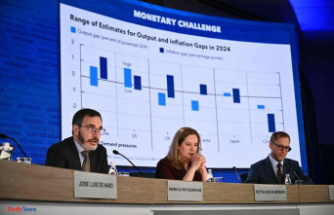Anyone who was able to look forward to a salary increase in the past year may still be worse off overall. The high inflation will eat up the effects of general wage developments in 2022 as well. It is the third annual real wage loss in a row.
Real wages fell last year for the third year in a row - by 3.1 percent year-on-year. The reason for this is the high inflation, as reported by the Federal Statistical Office. According to this, nominal wages rose by 3.5 percent in 2022, which was the strongest increase since 2008. At the same time, however, inflation was 6.9 percent - hence the high decline.
The nominal wage index shows the development of the gross monthly earnings of employees including special payments. The Federal Office has now corrected the real wage index downwards by 1.0 percentage point compared with the preliminary result from early February. The reason for this is the recent regular adjustment of the consumer price index.
After 2021, inflation is once again responsible for the high loss of real wages. In 2020, however, according to the statisticians, the increased use of short-time work contributed to the negative development.
The result for the fourth quarter of 2022 was also negative. Although nominal wages rose by 4.7 percent, with a simultaneous increase in consumer prices of 8.6 percent, the bottom line is a fall in real wages of 3.7 percent compared to the same period last year.












